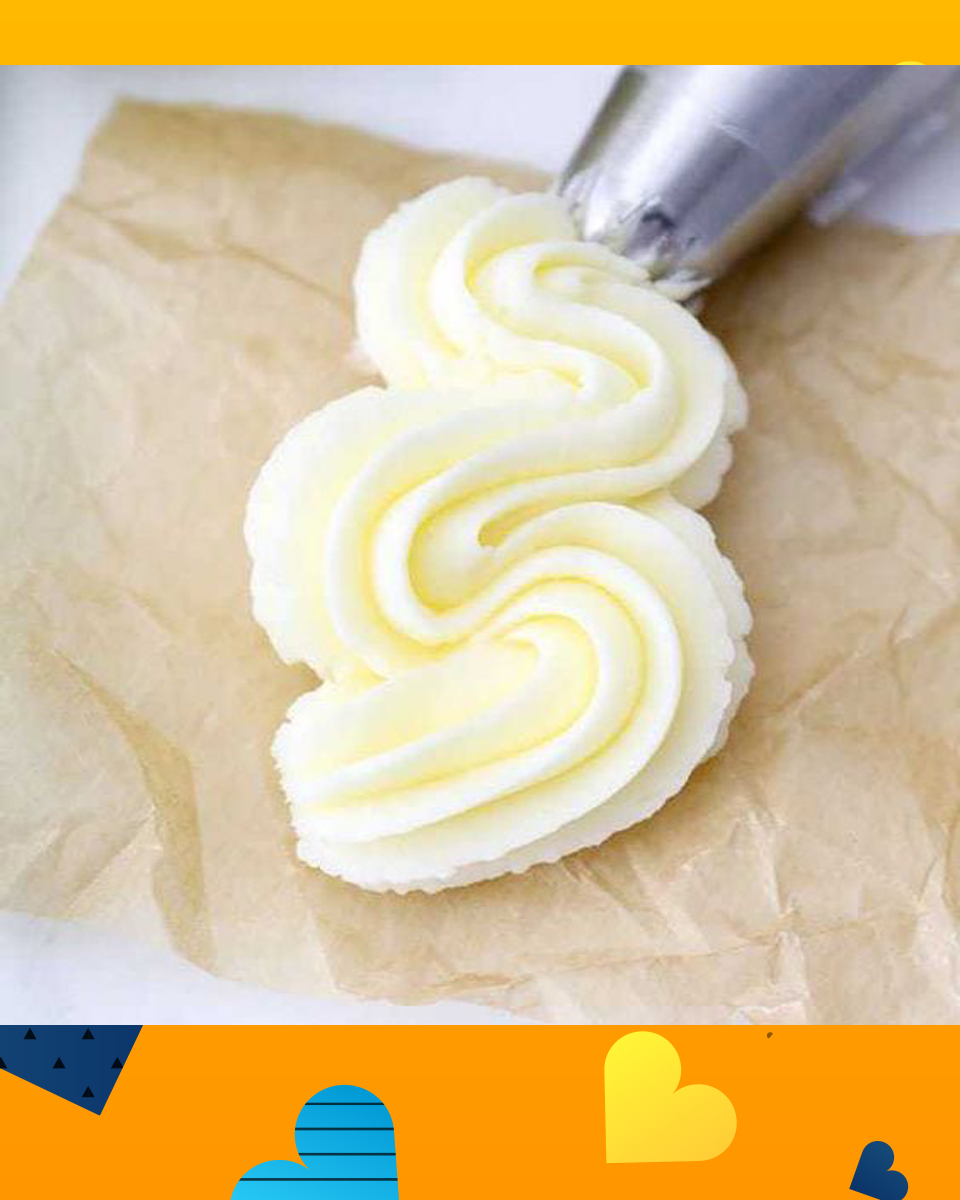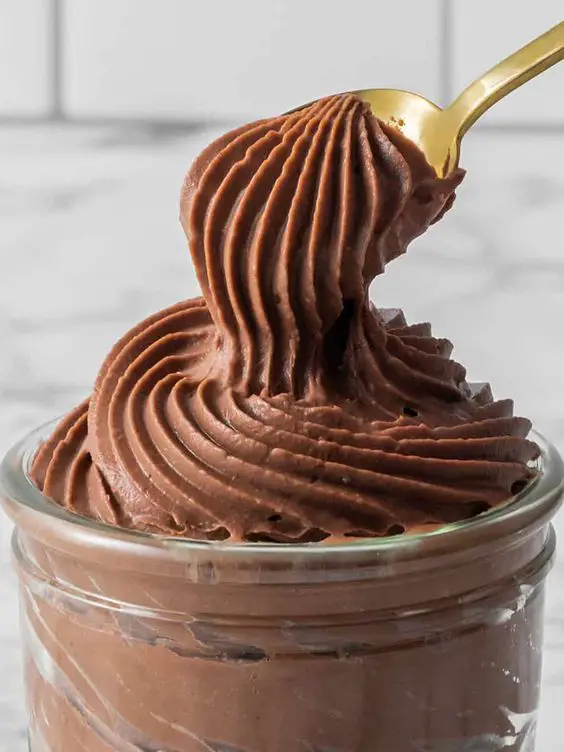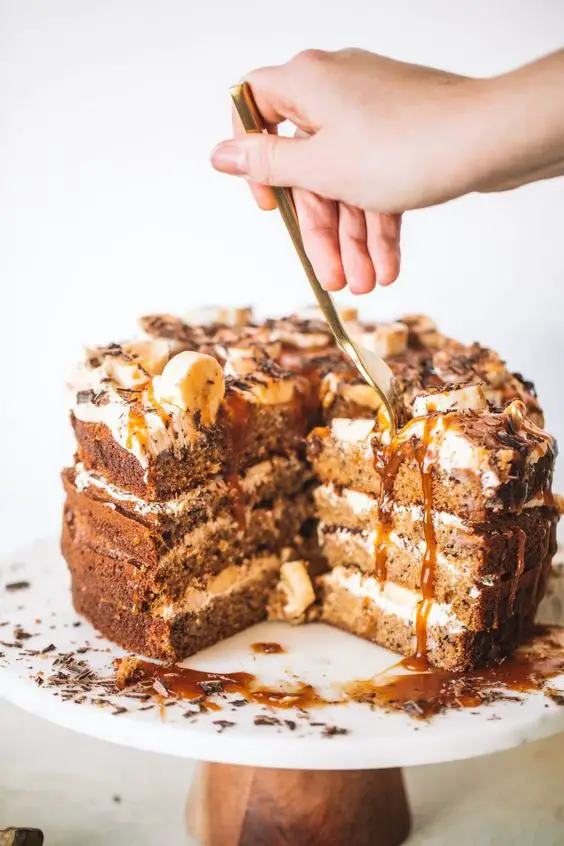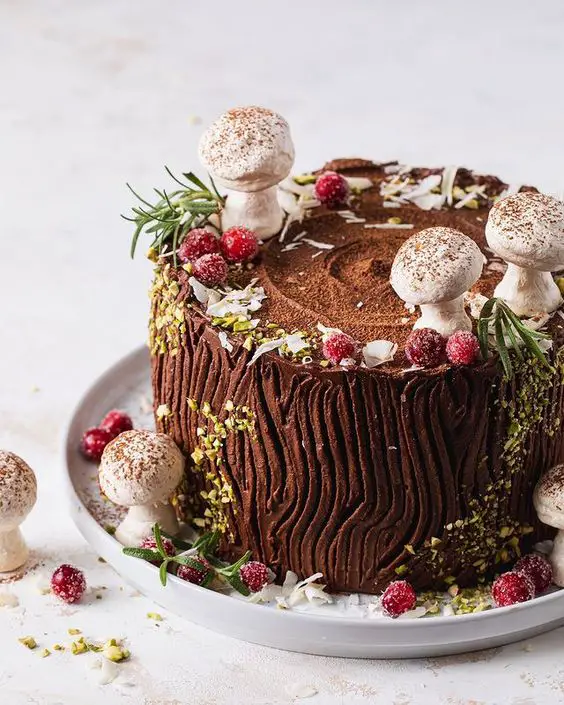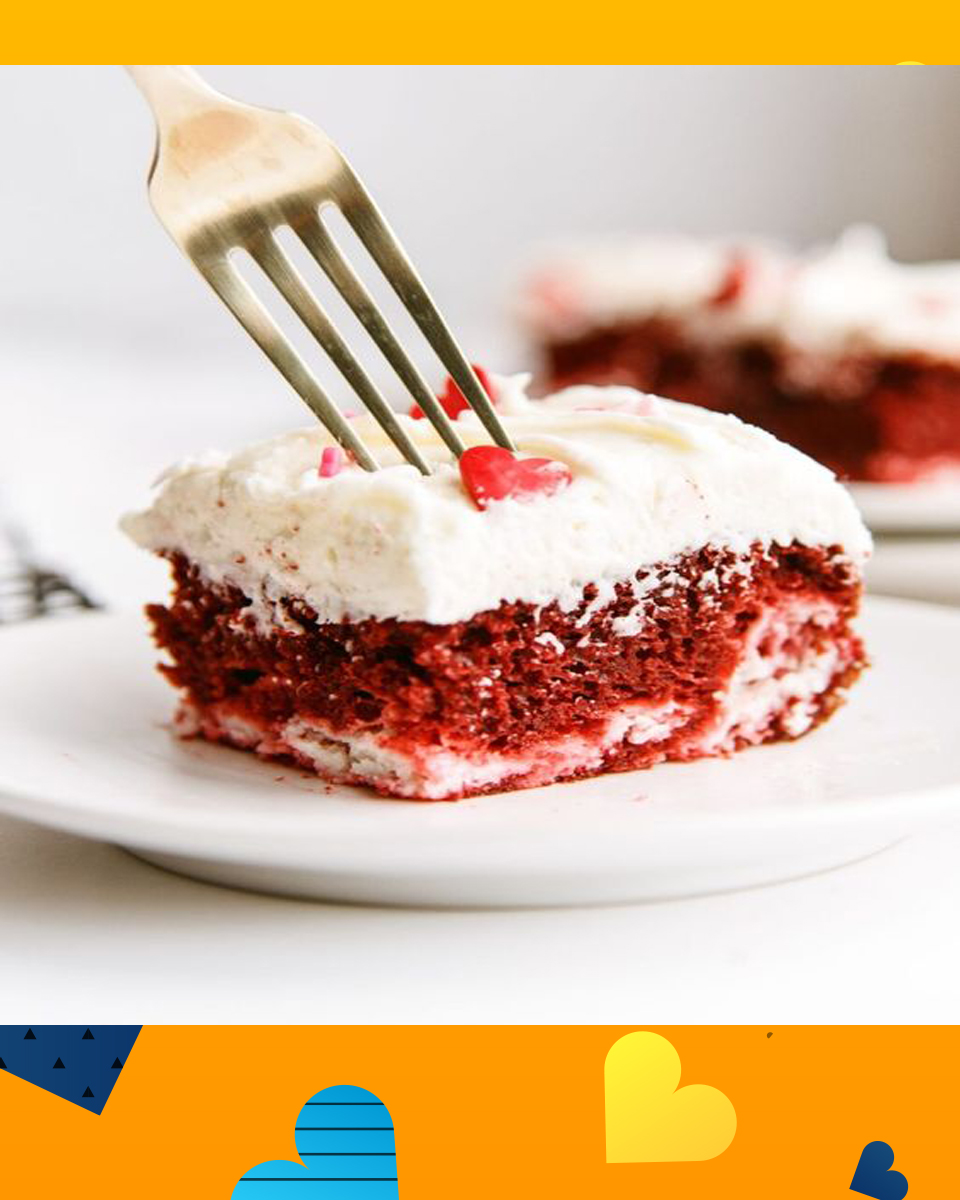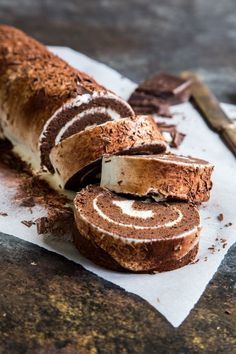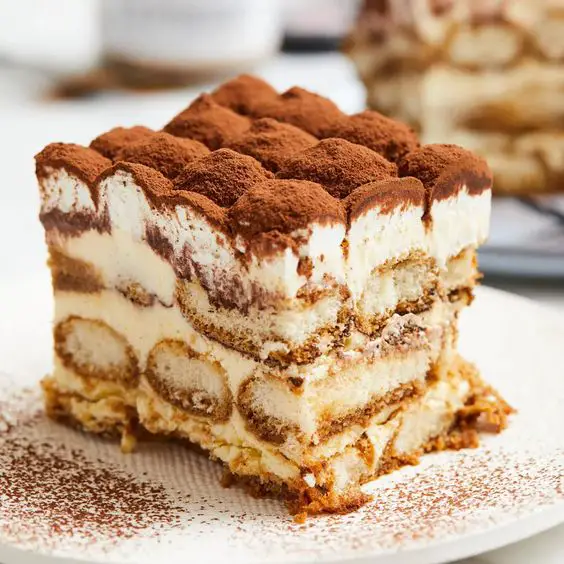Cream Cheese Buttercream is a luxurious and delectable frosting that beautifully combines the rich and tangy flavors of cream cheese with the velvety smoothness of traditional buttercream. This delightful fusion creates a frosting that strikes a perfect balance between sweetness and a slight tang, making it a popular choice for cakes, cupcakes, cookies, and more. Cream Cheese Buttercream adds a touch of sophistication to desserts with its velvety texture and creamy consistency, making it an ideal complement to a variety of flavors. Whether generously spread atop a classic carrot cake or elegantly piped onto a red velvet cupcake, Cream Cheese Buttercream brings an irresistible creaminess that is sure to satisfy both the eye and the palate.
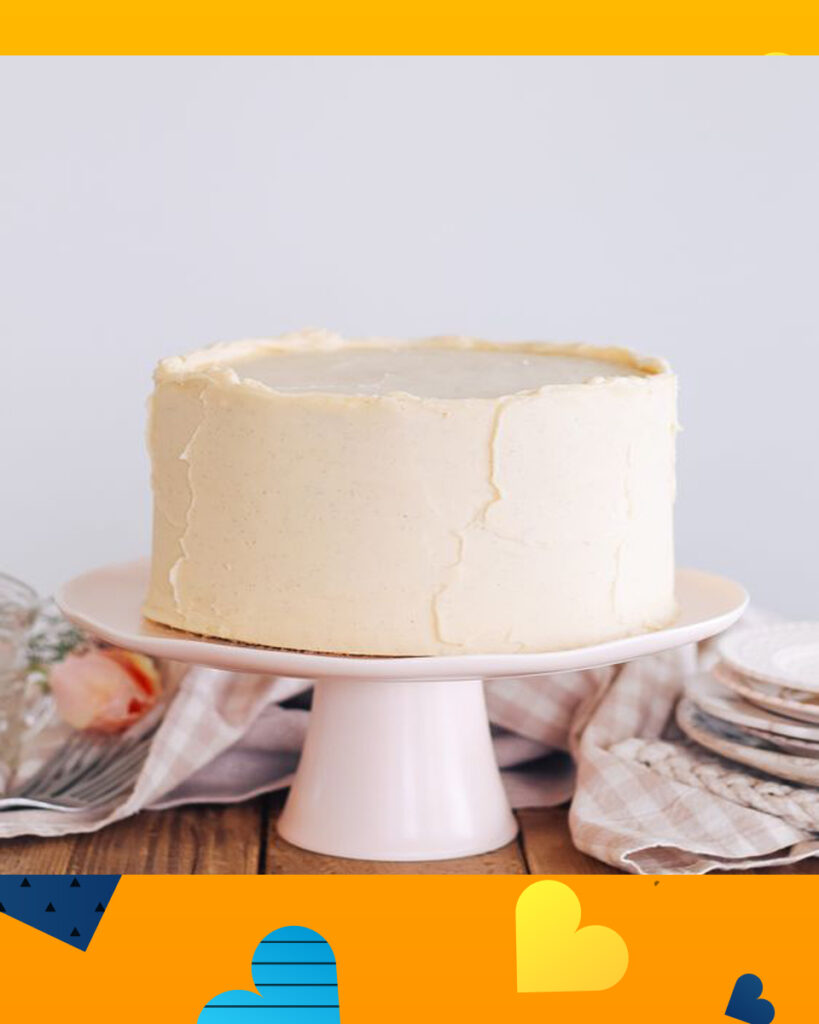
What is Cream Cheese Buttercream ?
Cream Cheese Buttercream is a luxurious and flavorful frosting that combines the smoothness of traditional buttercream with the tangy richness of cream cheese. This delectable frosting is often used to adorn cakes, cupcakes, cookies, and other baked goods. It offers a delightful balance of sweetness and tanginess, making it a popular choice for a wide range of dessert recipes.
The key ingredients in Cream Cheese Buttercream are cream cheese, unsalted butter, powdered sugar, and vanilla extract. The cream cheese adds a velvety texture and a distinctive tangy flavor that pairs wonderfully with the sweet and creamy profile of buttercream. The addition of vanilla extract enhances the overall taste and aroma.
To make Cream Cheese Buttercream, the cream cheese and butter are first beaten together until smooth. Then, powdered sugar is gradually added to achieve the desired sweetness and consistency. The frosting is typically whipped until light and fluffy, resulting in a creamy texture that’s easy to spread or pipe onto baked goods.
Cream Cheese Buttercream is particularly well-suited for desserts with a tangy counterpart, such as red velvet cake or carrot cake. Its smoothness and ability to hold shapes when piped also make it a popular choice for cake decorating and intricate designs. Whether used for simple swirls, rosettes, or more elaborate decorations, Cream Cheese Buttercream adds both flavor and elegance to desserts.
Due to the presence of cream cheese, it’s important to refrigerate desserts frosted with Cream Cheese Buttercream and store any leftover frosting in the refrigerator. This helps maintain the freshness and quality of the frosting and prevents it from becoming overly soft.
In summary, Cream Cheese Buttercream is a delightful marriage of cream cheese’s tanginess and buttercream’s smoothness, resulting in a versatile frosting that elevates the taste and appearance of a wide variety of baked treats.
Why is my Cream Cheese Buttercream too runny?
If your Cream Cheese Buttercream is too runny, it can be disappointing, but there are ways to troubleshoot and fix the issue. Here are some common reasons why Cream Cheese Buttercream might turn out too runny and how to address them:
- Warm Ingredients: Cream cheese and butter should be at room temperature when making the buttercream. If they are too soft or even slightly melted, the frosting can become runny. Make sure both ingredients are properly softened but not overly warm.
- Overmixing: Overmixing the cream cheese and butter can lead to incorporating too much air into the mixture, causing the frosting to become loose. Mix just until the ingredients are combined and the frosting is smooth.
- Incorrect Ratios: The ratio of cream cheese to butter to powdered sugar is crucial for achieving the right consistency. Adding too much cream cheese or not enough powdered sugar can result in a runny frosting.
- High Humidity: High humidity can soften the butter and cream cheese, making the frosting more prone to becoming runny. If it’s humid, you might need to use slightly less liquid ingredients or more powdered sugar to compensate.
- Liquid Additions: Adding too much liquid flavoring, such as vanilla extract or milk, can thin out the frosting. Use flavorings sparingly and adjust the consistency by adding more powdered sugar if needed.
How to Fix Runny Cream Cheese Buttercream:
- Chill and Re-Whip: Place the runny frosting in the refrigerator for about 30 minutes to allow it to firm up slightly. Then, re-whip the frosting at low to medium speed until it thickens and regains its proper consistency.
- Add Powdered Sugar: Gradually add more sifted powdered sugar to the frosting while mixing. This will help thicken the frosting and stabilize it.
- Use Cold Cream Cheese or Butter: If you’ve added too much liquid and the frosting is runny, you can try incorporating small amounts of cold cream cheese or butter to help bind the mixture together.
- Cornstarch or Flour: In extreme cases, you can create a slurry with a small amount of cornstarch or flour mixed with water and gently heat it until it thickens. Allow it to cool before gradually incorporating it into the frosting.
- Refrigerate the Cake: If you’ve already frosted a cake with runny Cream Cheese Buttercream, refrigerate the cake for a few hours to help the frosting firm up. This can make it easier to handle and serve.
Remember that adjustments might be needed based on your specific situation. Be patient and make changes gradually to avoid overcompensating. With some careful adjustments, you can transform your runny Cream Cheese Buttercream into a smooth and luscious frosting.
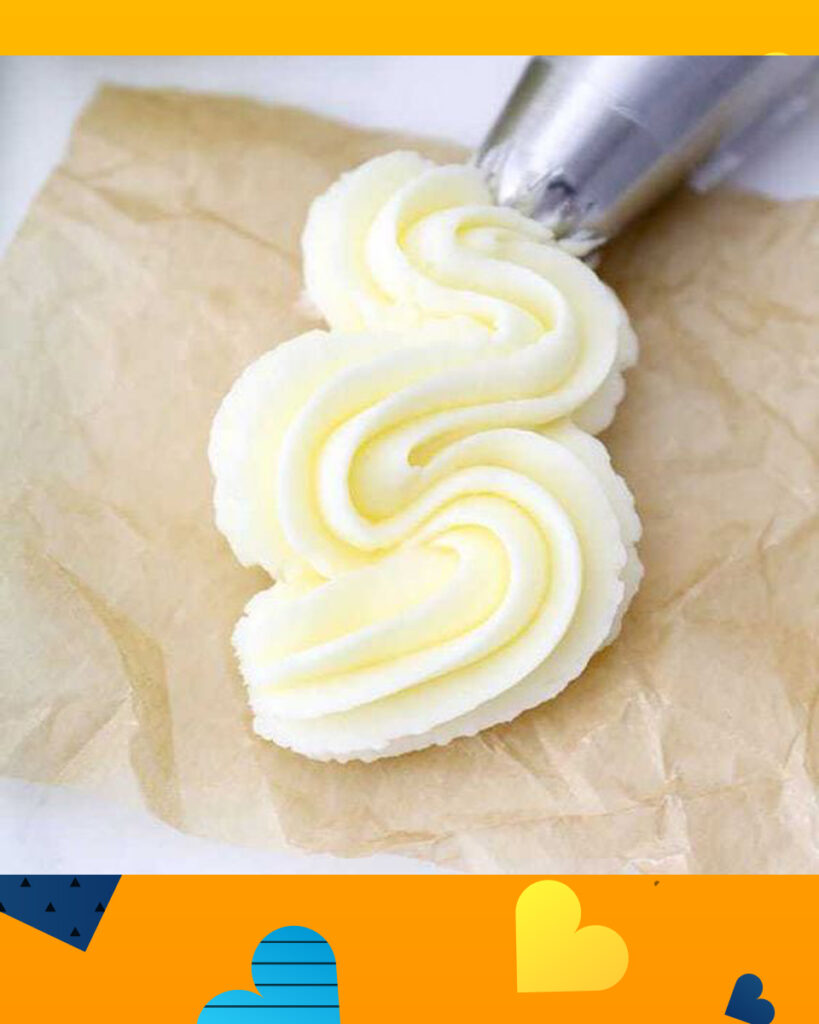
Why is my Cream Cheese Buttercream lumpy?
If your Cream Cheese Buttercream turns out lumpy, it can be frustrating, but there are ways to troubleshoot and fix the issue. Lumps in Cream Cheese Buttercream can occur due to various factors. Here’s what might be causing the problem and how to address it:
- Cold Ingredients: Cream cheese and butter should be at room temperature when making the frosting. Cold ingredients can create lumps when mixed together. Make sure both ingredients are properly softened.
- Cream Cheese Texture: If the cream cheese isn’t fully softened or contains small lumps, those lumps can persist in the buttercream. Beat the cream cheese until it’s smooth before adding other ingredients.
- Overmixing: Overmixing the cream cheese and butter can cause the fat in the ingredients to separate and form small lumps. Mix the ingredients until they are just combined to prevent overmixing.
- Powdered Sugar Clumps: Sift the powdered sugar before adding it to the mixture to eliminate any clumps. Adding powdered sugar that isn’t properly sifted can result in lumps.
How to Fix Lumpy Cream Cheese Buttercream:
- Softening Cream Cheese: If your cream cheese has small lumps, you can try pressing it through a fine-mesh sieve to remove the lumps. Alternatively, microwave the cream cheese in short bursts at a low power setting to soften it without melting it.
- Use Room Temperature Ingredients: Ensure that both the cream cheese and butter are fully softened and at room temperature before mixing. Cold ingredients can result in lumps.
- Sifted Powdered Sugar: Sift the powdered sugar before adding it to the cream cheese and butter mixture. This will help prevent clumps from forming in the frosting.
- Gentle Mixing: Mix the cream cheese and butter on low to medium speed until just combined. Avoid overmixing, as this can lead to the ingredients separating and forming lumps.
- Straining: If the buttercream is already made and contains lumps, you can strain it through a fine-mesh sieve to remove the lumps. This can help salvage the frosting and create a smoother texture.
- Re-Whipping: If the lumps are small and not too pronounced, you can try re-whipping the frosting. As the cream cheese and butter continue to soften at room temperature, the lumps may dissolve.
Remember that prevention is key, so start with room temperature ingredients, sifted powdered sugar, and gentle mixing to avoid lumps in the first place. If lumps do occur, don’t be discouraged – there are ways to salvage the frosting and achieve a smooth and delicious Cream Cheese Buttercream.
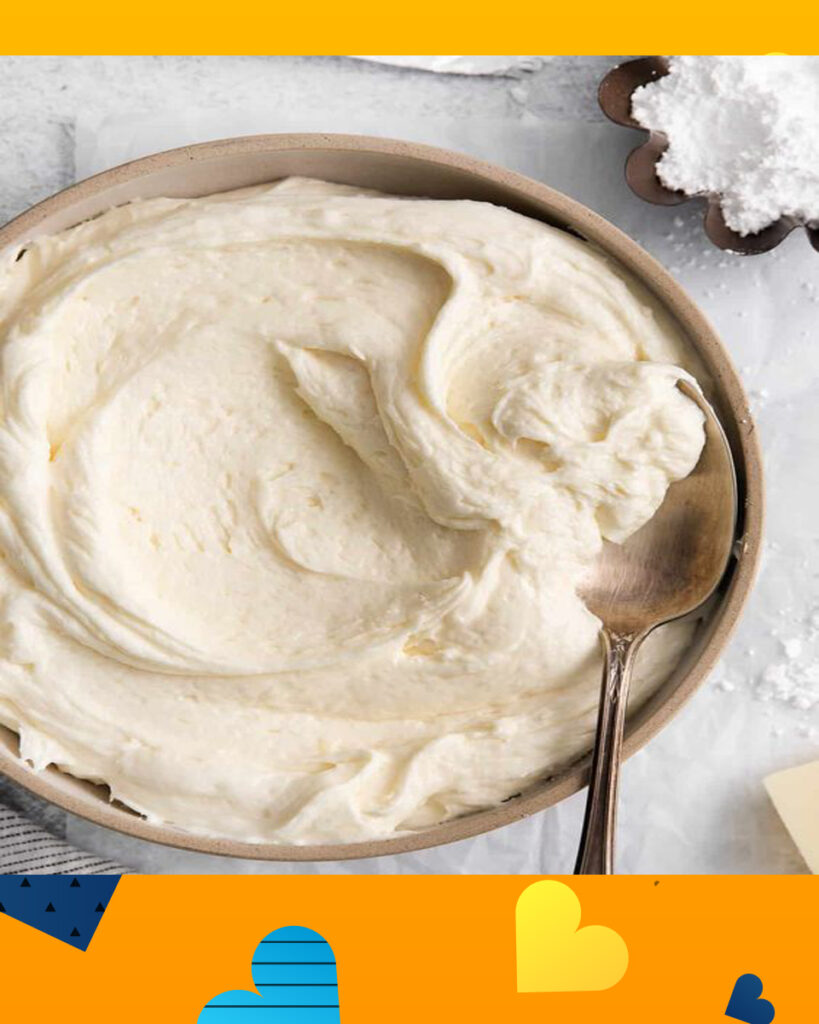
Cream Cheese Buttercream Recipe
Ingredients
- 8 oz (225g) cream cheese, softened
- ½ cup (1 stick or 113g) unsalted butter, softened
- 4 cups (480g) powdered sugar, sifted
- 1 teaspoon vanilla extract
Instructions
- Prepare Ingredients:
- Make sure the cream cheese and butter are at room temperature. Softening them will ensure a smooth and lump-free buttercream.
- Beat Cream Cheese and Butter:
- In a mixing bowl, use an electric mixer on medium speed to beat the softened cream cheese and butter until creamy and well combined. This usually takes around 2-3 minutes.
- Add Vanilla Extract:
- Mix in the vanilla extract to flavor the buttercream. The vanilla adds a delicious aroma and taste to the frosting.
- Gradually Add Powdered Sugar:
- Begin adding the sifted powdered sugar to the cream cheese and butter mixture, about 1 cup at a time. Start mixing on low speed to prevent the sugar from flying out of the bowl.
- Mix Until Smooth:
- After each addition of powdered sugar, increase the mixer speed to medium and mix until the sugar is fully incorporated and the mixture is smooth.
- Adjust Consistency:
- If the buttercream is too thick, you can add a small amount of milk or cream, one tablespoon at a time, and mix until you reach the desired consistency. If it’s too thin, add more powdered sugar.
- Final Mixing:
- Once all the powdered sugar is added and the buttercream is smooth and creamy, continue mixing for an additional 2-3 minutes to ensure that everything is well combined and the texture is consistent.
- Taste and Adjust:
- Give the Cream Cheese Buttercream a taste. If you prefer it sweeter, you can add more powdered sugar. If you want a more pronounced cream cheese flavor, you can add a little more cream cheese.
- Use or Store:
- Use the Cream Cheese Buttercream immediately for frosting cakes, cupcakes, or cookies. If you’re not using it right away, cover the bowl with plastic wrap and store it in the refrigerator. Before using it, let it come to room temperature and give it a good stir to restore its consistency.
This Cream Cheese Buttercream recipe will yield a creamy, tangy, and sweet frosting that’s perfect for decorating your baked creations. Remember that ingredient quantities can be adjusted to suit your taste preferences, so feel free to make slight modifications if needed.
Nutrition information
The nutrition information for Cream Cheese Buttercream can vary depending on the specific quantities of ingredients used and the serving size. However, I can provide you with an approximate estimation based on the quantities you provided earlier. Keep in mind that this is a general estimate and may vary depending on your specific recipe and portion sizes.
Nutritional Information (Approximate) for 1 Serving (2 tablespoons) of Cream Cheese Buttercream:
- Calories: Around 160 kcal
- Total Fat: Approximately 9g
- Saturated Fat: Around 6g
- Trans Fat: Minimal
- Cholesterol: Roughly 25mg
- Sodium: About 20mg
- Total Carbohydrates: Around 20g
- Dietary Fiber: Minimal
- Sugars: Approximately 20g
- Protein: Minimal
Please note that Cream Cheese Buttercream is a rich and indulgent frosting due to its cream cheese and butter content. The nutritional values provided are approximate and can vary based on ingredient brands, quantities, and variations in preparation.
If you’re concerned about specific dietary needs or restrictions, it’s recommended to calculate the nutrition information based on the exact quantities and brands of ingredients you use, using a reliable nutrition calculator.
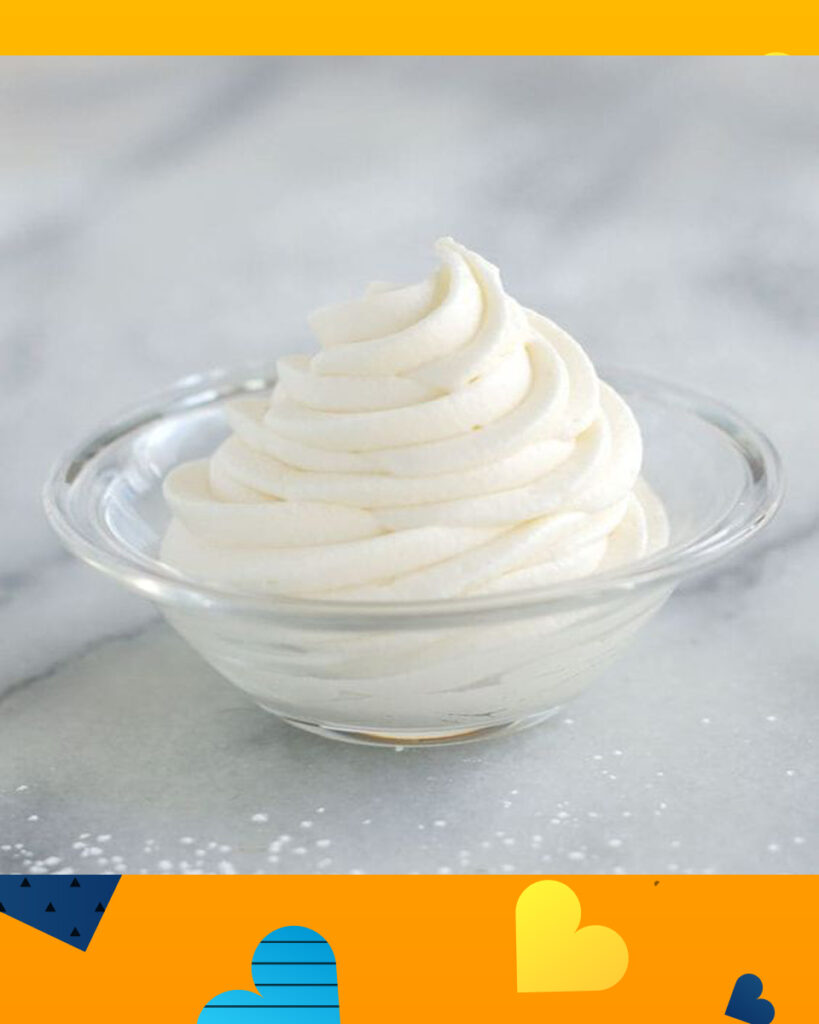
Tips to make perfect Cream Cheese Buttercream
Creating the perfect Cream Cheese Buttercream requires attention to detail and a few key techniques. Here are some tips to help you achieve a flawless and delicious result:
- Room Temperature Ingredients:
- Ensure that both the cream cheese and butter are fully softened and at room temperature before starting. Softening them properly helps create a smooth and lump-free buttercream.
- Quality Ingredients:
- Use high-quality cream cheese and unsalted butter for the best flavor and texture. Avoid using reduced-fat cream cheese, as it can affect the consistency.
- Sifted Powdered Sugar:
- Sift the powdered sugar before adding it to the cream cheese and butter mixture. This prevents lumps and ensures a smooth texture.
- Gradual Sugar Addition:
- Add the sifted powdered sugar gradually, about 1 cup at a time. This helps prevent the sugar from flying out of the bowl and gives you better control over the consistency.
- Mixing Techniques:
- Mix the cream cheese and butter together on medium speed until creamy and well combined. Avoid overmixing, as it can incorporate too much air and affect the texture.
- Flavoring:
- Use high-quality vanilla extract to enhance the flavor of the buttercream. You can also experiment with other flavor extracts or add-ins like lemon zest for variation.
- Consistency Adjustment:
- If the buttercream is too thick, you can add a small amount of milk or cream, one tablespoon at a time, until it reaches the desired consistency. If it’s too thin, add more powdered sugar.
- Avoid Overmixing:
- Once the powdered sugar is fully incorporated, mix the buttercream for an additional 2-3 minutes to achieve a smooth and creamy texture. Overmixing can cause the buttercream to become runny.
- Taste and Adjust:
- After the buttercream is well mixed, give it a taste. Adjust the sweetness or tanginess by adding more powdered sugar or cream cheese, if desired.
- Chill Before Using:
- If the buttercream is too soft, refrigerate it for about 15-30 minutes before using. Chilled buttercream holds its shape better for piping and decorating.
- Store Properly:
- Store any leftover buttercream in an airtight container in the refrigerator. When ready to use, let it come to room temperature and give it a good stir before applying.
- Practice Piping:
- If you plan to pipe decorations, practice on a separate surface before applying them to your baked goods. This helps ensure a steady hand and desired design.
With these tips and a bit of practice, you can create a creamy, tangy, and perfectly textured Cream Cheese Buttercream that’s sure to enhance the flavor and appearance of your desserts.
How to serve
Serving Cream Cheese Buttercream is a delightful way to enhance the flavors and presentation of your baked treats. Here’s how to serve Cream Cheese Buttercream in a way that makes your desserts even more enjoyable:
- Freshly Frosted Baked Goods:
- Cream Cheese Buttercream is often used to frost cakes, cupcakes, cookies, and other baked goods. Serve these treats with the buttercream frosting fully adorned and ready to be savored.
- Cupcakes:
- For cupcakes, use a piping bag and a decorative tip to create swirls or rosettes of Cream Cheese Buttercream on top of each cupcake. Add sprinkles, colored sugar, or edible decorations for an extra touch of visual appeal.
- Cake Slices:
- When serving cake slices, make sure each slice is generously frosted with Cream Cheese Buttercream. You can create clean slices using a sharp knife dipped in warm water and wiped clean between cuts.
- Decorative Elements:
- Enhance the presentation by adding additional garnishes. Consider topping cupcakes or cake slices with fresh berries, chocolate shavings, edible flowers, or even a dusting of cocoa powder.
- Variations:
- Experiment with different flavors and textures. You can combine Cream Cheese Buttercream with other elements like fruit fillings, chocolate ganache, or toasted nuts to create layers of flavor and texture.
- Plating:
- Place your frosted baked goods on attractive serving plates or cake stands. A visually appealing presentation enhances the overall dining experience.
- Accompaniments:
- Serve Cream Cheese Buttercream-frosted treats alongside complementary items like a scoop of vanilla ice cream, a dollop of whipped cream, or a drizzle of fruit sauce.
- Dessert Displays:
- Create dessert displays for special occasions. Arrange a variety of cupcakes, cake slices, and cookies frosted with Cream Cheese Buttercream on a dessert table for guests to enjoy.
- Individual Servings:
- Portion control is important with rich desserts. If serving a larger group, consider offering smaller individual servings of frosted treats to allow guests to sample a variety of flavors.
- Enjoy the Layers:
- Encourage your guests to savor the combination of creamy, tangy Cream Cheese Buttercream with the flavors of the baked goods it accompanies.
Remember, the visual appeal of Cream Cheese Buttercream can be just as enticing as its taste. Taking the time to present your frosted treats in an attractive and thoughtful manner can make the experience of enjoying them even more memorable.
How to store
Storing Cream Cheese Buttercream properly is essential to maintain its freshness and quality. Since Cream Cheese Buttercream contains cream cheese, it’s important to follow food safety guidelines. Here’s how to store it:
- Refrigeration:
- Due to the cream cheese content, Cream Cheese Buttercream must be stored in the refrigerator at all times.
- Airtight Container:
- Transfer any leftover Cream Cheese Buttercream to an airtight container. Make sure the container is clean and dry before placing the frosting inside.
- Cover Surface:
- Before sealing the container, press a piece of plastic wrap directly onto the surface of the buttercream. This helps prevent a skin from forming on the top layer.
- Sealing:
- Seal the container tightly with its lid to prevent air from entering and drying out the frosting.
- Expiration Date:
- Cream Cheese Buttercream should be consumed within about 1 week of preparation. The cream cheese can start to break down after this time, affecting both flavor and texture.
- Label and Date:
- If you’re making a batch for future use, label the container with the date it was made. This will help you keep track of its freshness.
- Use a Fresh Batch:
- If you’re planning to store Cream Cheese Buttercream for a while, consider using a portion of it and making a fresh batch when needed. Freshly made buttercream tends to have the best flavor and texture.
- Re-Stir Before Use:
- Before using refrigerated Cream Cheese Buttercream, let it come to room temperature and give it a good stir to restore its smooth and creamy texture.
- Avoid Freezing:
- While it’s possible to freeze Cream Cheese Buttercream, the texture can change upon thawing. If you choose to freeze it, store it in an airtight container and allow it to thaw in the refrigerator before re-whipping to restore its consistency.
By following these storage guidelines, you can enjoy your Cream Cheese Buttercream while ensuring its safety and quality. Remember that cream cheese-based frostings are best enjoyed when fresh, so plan your quantities accordingly to minimize the need for long-term storage.
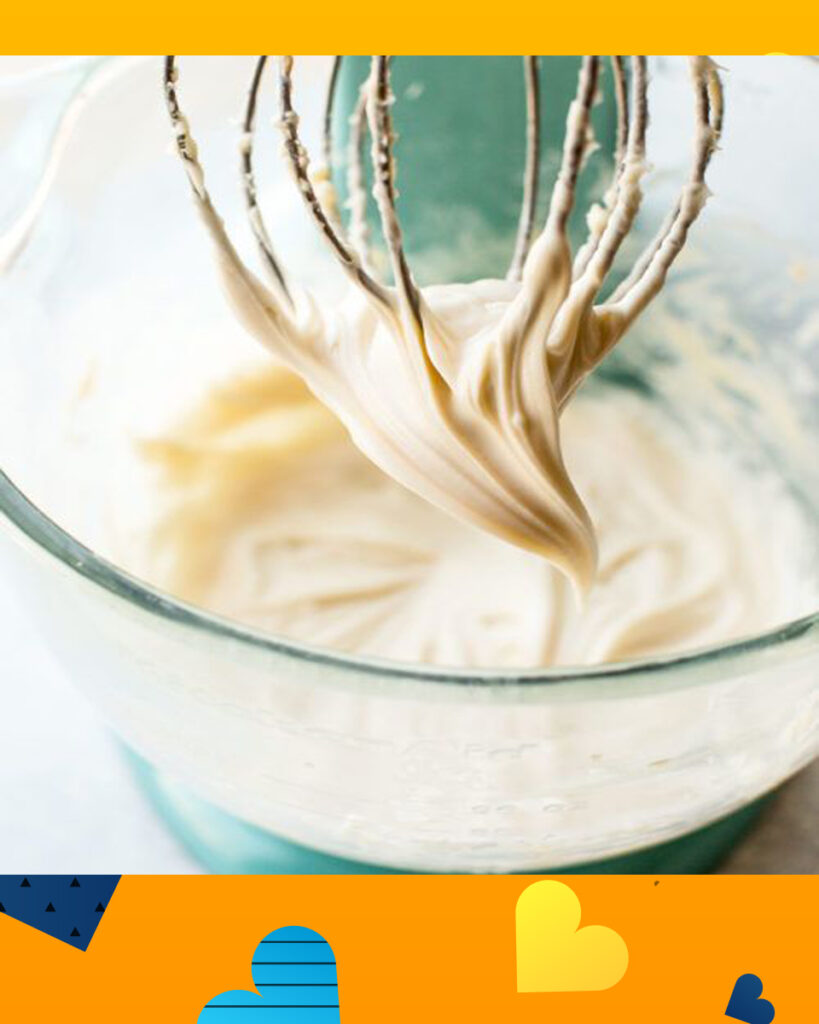
FAQ’s
- What is Cream Cheese Buttercream? Cream Cheese Buttercream is a frosting that combines cream cheese and butter with powdered sugar to create a creamy and tangy icing that’s commonly used to decorate cakes, cupcakes, and other baked goods.
- Can I use Cream Cheese Buttercream for piping and decorations? Yes, you can use Cream Cheese Buttercream for piping and decorations, but it may be slightly softer than traditional buttercream. Chilling the frosting before piping can help achieve better results.
- Does Cream Cheese Buttercream need to be refrigerated? Yes, Cream Cheese Buttercream contains cream cheese, which is a perishable ingredient. It should be stored in the refrigerator and any desserts frosted with it should also be refrigerated.
- Can I make Cream Cheese Buttercream in advance? Yes, you can prepare Cream Cheese Buttercream in advance. Store it in an airtight container in the refrigerator for up to a week. Before using, let it come to room temperature and give it a good stir to restore its consistency.
- Can I freeze Cream Cheese Buttercream? Cream Cheese Buttercream can be frozen, but freezing can alter its texture when thawed. If you choose to freeze it, store it in an airtight container and allow it to thaw in the refrigerator before re-whipping to restore its creamy texture.
Troubleshooting Cream Cheese Buttercream:
- Why is my Cream Cheese Buttercream too runny? Overmixing the cream cheese and butter can cause the frosting to become too soft. To fix this, refrigerate the frosting for about 30 minutes and then re-whip it until it reaches the desired consistency.
- Why is my Cream Cheese Buttercream lumpy? Cold cream cheese and butter can result in lumps. Ensure that both ingredients are at room temperature before mixing. If you still have lumps, beat the frosting for a bit longer to smooth it out.
- Why is my Cream Cheese Buttercream curdled or separated? Overmixing or using ingredients that are too cold can cause the frosting to curdle. To fix this, let the ingredients come to room temperature and then mix on low speed until they come together.
- Can I fix over-sweetened Cream Cheese Buttercream? If your frosting is overly sweet, you can balance it by adding a small amount of lemon juice or a pinch of salt to cut the sweetness. However, avoid adding too much liquid, as it can affect the frosting’s texture.
- Why does my Cream Cheese Buttercream taste too tangy? Cream cheese can vary in tanginess, so the brand you use might affect the flavor. To balance the tanginess, you can gradually add more powdered sugar until you reach your preferred taste.
Remember, making Cream Cheese Buttercream may involve a bit of trial and error, but with practice, you can create a delicious and visually appealing frosting for your baked creations.

